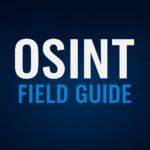“Many minds are better than one…”
In the past, tapping Collective Intelligence was slow and dull, using polls and surveys to find the statistical mean. But now there is a new technology called “Artificial Swarm Intelligence” that allows online groups to think together in real-time by forming a unified system that can answer questions, make predictions, and reach decisions.
Collective Intelligence is not simply ‘group’ intelligence but is a process that combines progress and ideas that would be tenuous otherwise.
It can help you overcome these three main setbacks when assembling research or finding solutions to difficult problems,
- the lack of control and communication when gathering information initially.
- the disparity between two or more workers when assessing the same topic.
- the absence of close scrutiny when drawing a conclusion.
Collective Intelligence is what differentiates a simple discussion among friends or colleagues from professional networking, centered on a single objective that amasses knowledge from various people. It’s information that expands from multiple minds when they exist together instead of working on an individual level.
Forming a consensus, making collective decisions, combining ideas from independent resources, and encouraging people through healthy competition are all components of collective intelligence.

What is Collective Intelligence?
In order to apply the concept of collective intelligence, knowing exactly what it is becomes necessary. According to the National Endowment for Science Technology and the Arts (NESTA), Collective Intelligence is a process through which a large group of individuals gather and share their knowledge, data, and skills for the purpose of solving societal issues.
You may also refer to it as a combination of a group’s wisdom and knowledge. The entire concept surrounding collective intelligence states that when several minds come together, they reach a level of intelligence that cannot be attained on an individual level.
Therefore, collective intelligence is a type of shared intelligence that arises from the combined efforts, collaboration, productive discussions, and interpretations of many individuals. Though it has been around for a long time, recent technological advancements connecting thousands of individuals with a few simple touches have completely transformed what CI can achieve.
The Principles of Collective Intelligence
Theorists Don Tapscott and Anthony Williams are of the opinion that collective intelligence is the ultimate result of group behavior. It’s based on mass collaboration founded upon the following principles:
Unity
This term implies that in collective intelligence all individuals have an open or united approach. It means that when you and your group are applying this concept, all can share and exchange ideas freely without marking any idea as ‘mine.’ All theories and suggestions are openly exchanged without any unnecessary competition or possession among your team.
Peering
This refers to the ability of participants at all levels to open up and work on projects horizontally without the need for approval from a senior body or hierarchy. Peering allows all workers, regardless of the status as a junior employee or boss, to feel confident of their position and work without having to perpetually stress about critical judgment.
However, peering also comes with the responsibility of making smart decisions and acting in a way that is beneficial for the team. While it bestows all participants with numerous independent rights, peering also requires professionalism, active thinking, and planning.
Sharing
Food is not the only thing your friends expect you to share. Another vital principle of collective intelligence is the equal sharing of all intellectual property and resources among the group members. It makes way for an unrestricted flow of constructive criticism and ideas.
When you and your team make fair and equal use of all supplies and resources, all members are motivated to work to their full potential. Such practices lead to prolific results and better understanding among the group members (unless you disagree to share food).
Global Action 🌐
This principle is structured upon the emergence of modern technology, which allows several organizations to communicate beyond their usual collaborators’ networks and engage a larger audience.
Global action helps overcome significant barriers like country borders, departmental restrictions, and time differences. It enables your group to grasp and utilize innovative ideas, unique talents, and new markets.
Geoff Mulgan, another important figure in the world of collective intelligence has founded five principles. This set of principles helps a group better focus on the past’s relevant collective memories, facts of the current times, and ways to resolve problems that occurred or will occur in the future.
Autonomous Commons
While autonomous discussions may sound risky, they are what pave the way for great success. Autonomy means having productive discussions and arguments without any ego, assumptions, ownership, or hierarchy. Such talks are important to make clarifications, abolish doubts, and maintain a good communication flow.
Balance
One of the key components for any brilliant organization or team is balance. Learning how to balance different elements and how much each of them is needed to achieve a certain result is what sets a particular team apart.
It is imperative for a team utilizing collective intelligence to know how much attention a component requires or if all factors have equal importance. Maintain a balance between all key factors to attain the desired goals.
Focus
Perhaps the meaning of success is incomplete without focus. While collective intelligence allows group members to work on several different things, it also demands them to remain focused on the goal. Deterring from the set target can have several consequences that overall impact your group’s productivity and coordination.
When practicing collective intelligence, attend to every component that matters, ensuring that you are not distracted. Each member must work attentively on their assigned role to attain the wanted results.
Reflexive
The eye doesn’t see what the mind doesn’t know. Therefore, it is essential that all group members have sufficient relevant knowledge about their field of expertise. The more reflexive a team is, the more intelligent and prolific it is in the long term.
Integration for Action
This refers to collecting, analyzing, and drawing on various types of data, options, and ways of thinking to make a smart and well informed decision. It requires the collective intelligence of a team that is efficient and honest in their area of work.
The Benefits of Collective Intelligence
Better and Smarter Together
Collective intelligence experts are of the opinion that the magic lies in the coming together of different minds because that’s when a new level of understanding emerges.
If you and your team are working on a presentation to wow a new client, each member may bring something into the process which may be general intelligence; however, together, it forms a term known as the general collective intelligence factor. This makes way for a higher, more prolific level of work, and the team will be more competent together than as individual members.
Creativity and Generation
Considering there are over 7.5 billion people worldwide, knowing how each person’s mind works is almost impossible. This is where collective intelligence comes in, which results in practical, sustainable, and more innovative ideas.
These ideas tend to improve creativity and generate new markets for a business or establishment since they are derived from the collaboration and thoughts of several minds.
Enhanced Productivity
As studies prove, teams that know their opinions are heard are considered to work more productively, as they’re aware of their responsibility within the environment. Your team is more likely to perform better when they have the authority to make their professional decisions due to their seniors’ appropriate flexibility and ability to adapt to the teams’ situations.
Better Coordination
To achieve any goal, establish good coordination among all the team members. Coordination also enables workers to find more efficient, and simpler ways to complete tasks. Ultimately, that saves time, capital, and effort.
Saving Resources
A team is more likely to fix a problem together, than when making members find solutions individually. The quicker solution saves a significant amount of money and time, along with manpower. More time to enjoy post-work!
How do we Harness the Power of Collective Intelligence?
Lets move on to the next important question now, when and how to ask about collective intelligence. Following are the times when CI is the best way to go:
Collaboration
As an example, when designing, introducing, or manufacturing a new product, one may think they’re making something that’s going to be universally used and sold. However, the truth may just be the opposite. Collective intelligence is what gets you the insight to all the pros and cons of the product, allowing all team members to look at the same product from different perspectives. This usually increases successful results.
Different Opinions
Utilize collective intelligence when you need various suggestions and opinions about a particular project, product, or problem. Multiple minds are more likely to give suggestions and solutions that cater to all possible risks and problems.
Make a panel or discussion meeting with your peers and form a decision by consensus via CI to achieve the set goals.
Greater Efficiency
To improve your team or projects’ efficiency, practice maintaining good communication, coordination, and flexibility to attain the desired results.
Tips to Use Collective Intelligence
Consider the following when practicing Collective Intelligence:
Valuing the Details
- Remember to value each member’s opinion and suggestions even if you don’t entirely act upon it. Understand that each individual is working and putting in the effort at their maximum mental capacity; therefore, appreciate each member’s input.
Providing Opportunities
- A team cannot move forward until the members are provided with the right opportunity. Make sure that you are providing sufficient exposure and chances to your members so that they may come forth and excel at what they do. Grant access to relevant information and offer help and guidance wherever and whenever needed.
Constructive Conflict
- Establish constructive conflict, criticism, and feedback for all employees so that they may benefit and improve with each passing day. Add on to their social confidence and ensure they feel like a significant part of the organization’s collective intelligence community.
CMX Chat – Redefining Online Chat Rooms
CMX is a platform where two revolutionizing concepts come together- emotional intelligence and collective intelligence. Often referred to as Collective Emotional Intelligence (CEI).
It has beneficial effects on performance and learning dynamics, making CEI an important contributing factor to excellent organizational behavior. That’s why EI and CI should be further harnessed by integrating them into projects and work-related curriculums.
If you are an enthusiast of emotional intelligence or collective intelligence, join CMX chat rooms today and converse with several other like-minded individuals. Build your knowledge about the vast concepts of EI and CI and turn your life around today!



